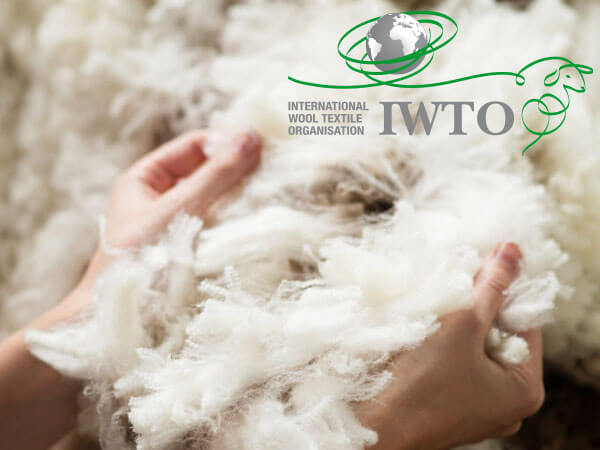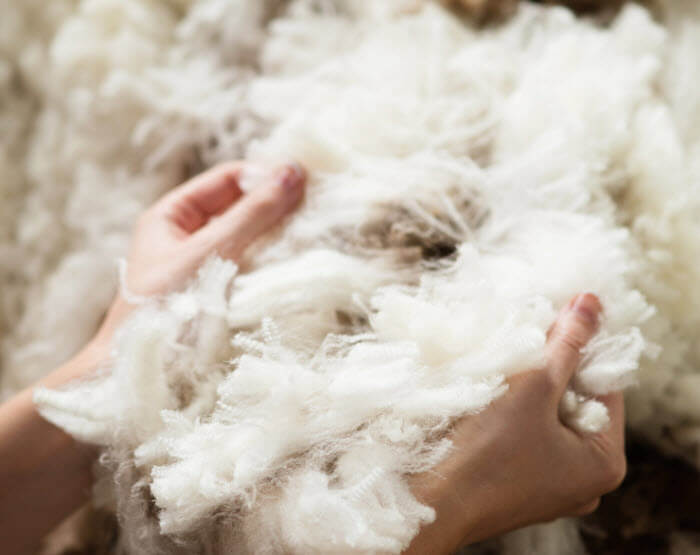
What if keeping and wearing your clothes for longer could help save the planet? Jeannette Cook outlines new research underlining the longevity of wool clothing and its importance in assessing the fibre’s eco credentials.
For decades, the fashion industry has been dominated by an approach to sustainability that pits materials against each other, based on how the materials are produced.
All of us in the industry have seen those rankings – nylon, viscose, polyester, cotton and wool on a simple chart with A-E grading, such as the energy-efficiency labels on home appliances.
This approach is rarely questioned. In fact, starting with materials is understandable. One of the first decisions in making clothing is determining which material to use. Handle, thickness, texture, performance, and price – why not add sustainability to the equation?
But what if the way that materials are produced doesn’t have the greatest influence on the environmental impact of an article of clothing?
New research from the wool industry shows that the most influential factor is actually how long it is worn.
Researchers studied the cradle-to-grave impacts of a wool sweater made from Australian Merino wool, processed in China and sold in the EU market.
“This is one of the few published studies of a full supply chain for a garment, with detailed data behind it,” says lead author Dr Stephen Wiedemann.
Researchers studied the cradle-to-grave impacts of a wool sweater made from Australian Merino wool, processed in China and sold in the EU market.
“This is one of the few published studies of a full supply chain for a garment, with detailed data behind it,” says lead author Dr Stephen Wiedemann.
“Of the major fibres, only cotton has also published such substantiated LCA work. None of the synthetics or cellulosic fibres have.”
This full LCA has been in the making since 2013. To do it, new work had to be commissioned in order to get the necessary level of robust data.
Funded by Australian Wool Innovation, the study has been peer-reviewed and published in the Journal of Life Cycle Assessment. To give an idea of the level, ISO methods would also be published here.
“The wool industry is publicly, openly and transparently offering these figures,” Dr Wiedemann says. “We won’t fully understand the environmental impacts of the fashion system unless we understand how garments are used.”
The case against single-use fashion
We all understand the problem with single-use plastic. A plastic spoon is made, used once, thrown away, and then sits until the end of time in landfill, leaking toxins into the water table.
What about single-use fashion? Perhaps not to the extent of the spoon or straw, but Professor Frances Corner’s book Why Fashion Matters cites a statistic that 30% of the clothes in an average British household are rarely, if ever, worn.
That suggests that something other than the rarely-used evening dress or formal suit is sitting in most people’s wardrobes.
Here, the data in the wool sweater LCA showed that wool sweaters in households surveyed had been purchased between 1 and 30 years ago. Some respondents reported wears of more than 200 times and expected another 200.
Calculating the total number of wears to 400 reduced environmental impacts by 49-68%, showing that substantial improvements are possible by wearing clothes more times.
“Considering the importance and variability in garment use,” the authors concluded, “it is clear that the impacts of the use phase must be considered to fully understand the environmental impacts. The simple fact is that clothing with a longer serviceable life is replaced less often, reducing the need for resources to manufacture replacements.”
Moving away from the numbers game
Working out fashion footprints is notoriously complex. One frequently used index applies five impact categories. Another, currently in the making, will cover 16.
A single score makes this complex calculus look easy. No matter what the numbers are, they need to reflect what clothes are to us, the people who wear them.
Clothes have so many subtle aspects, says Tone Tobiasson, founder of NICE Fashion and board member of the Union of Concerned Researchers in Fashion (UCRF).
“The current numbers game, which addresses only a fraction of the environmental footprint, is a blind alley. Researching what part wardrobes play in our lives, which is all about the use phase, has been ignored by the likes of the Higg Index, yet it is crucial.”
The findings of the wool LCA put traditional thinking about environmental impact in a new light – and show that all of us can play a larger part in reducing impacts than we might have previously thought.
We all wear clothes. We alone determine how often we wear something, how often we wash it, and whether we throw it away, recycle, or re-purpose it.
It’s up to us to choose as well as we can, and to take care of the purchases we make with our hard-earned cash.
We also need to be able to identify those garments that will likely be worn no more than a handful of times. The yarn and fabric quality, together with the standard of manufacturing, combined with good design, fit and form, all determine the longevity of textiles.
Environmental foot printing tools play an important role, but our careful consideration of all the factors is crucial. Just as we have demanded that single-use plastics be curtailed, we need to pay attention when selecting our clothes and be mindful of their subsequent use.
- Jeannette Cook is communications manager at the International Wool Textile Organisation (IWTO)
- With a worldwide membership encompassing the wool pipeline from farm to retail, IWTO represents the interests of the global wool trade. By facilitating research and development and maintaining industry standards, IWTO ensures a sustainable future for wool. www.iwto.org
Have your say. Tweet and follow us @WTiNcomment






